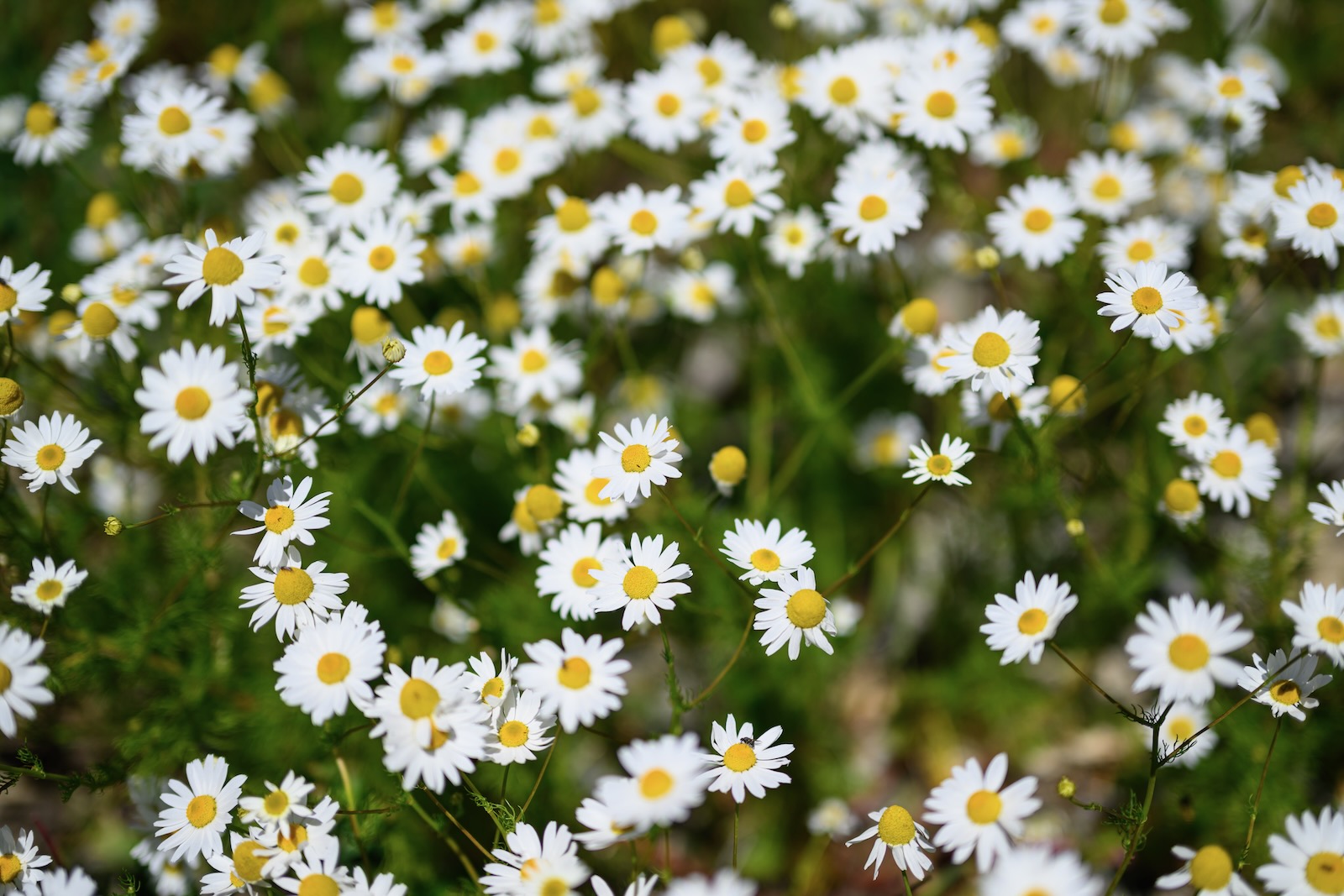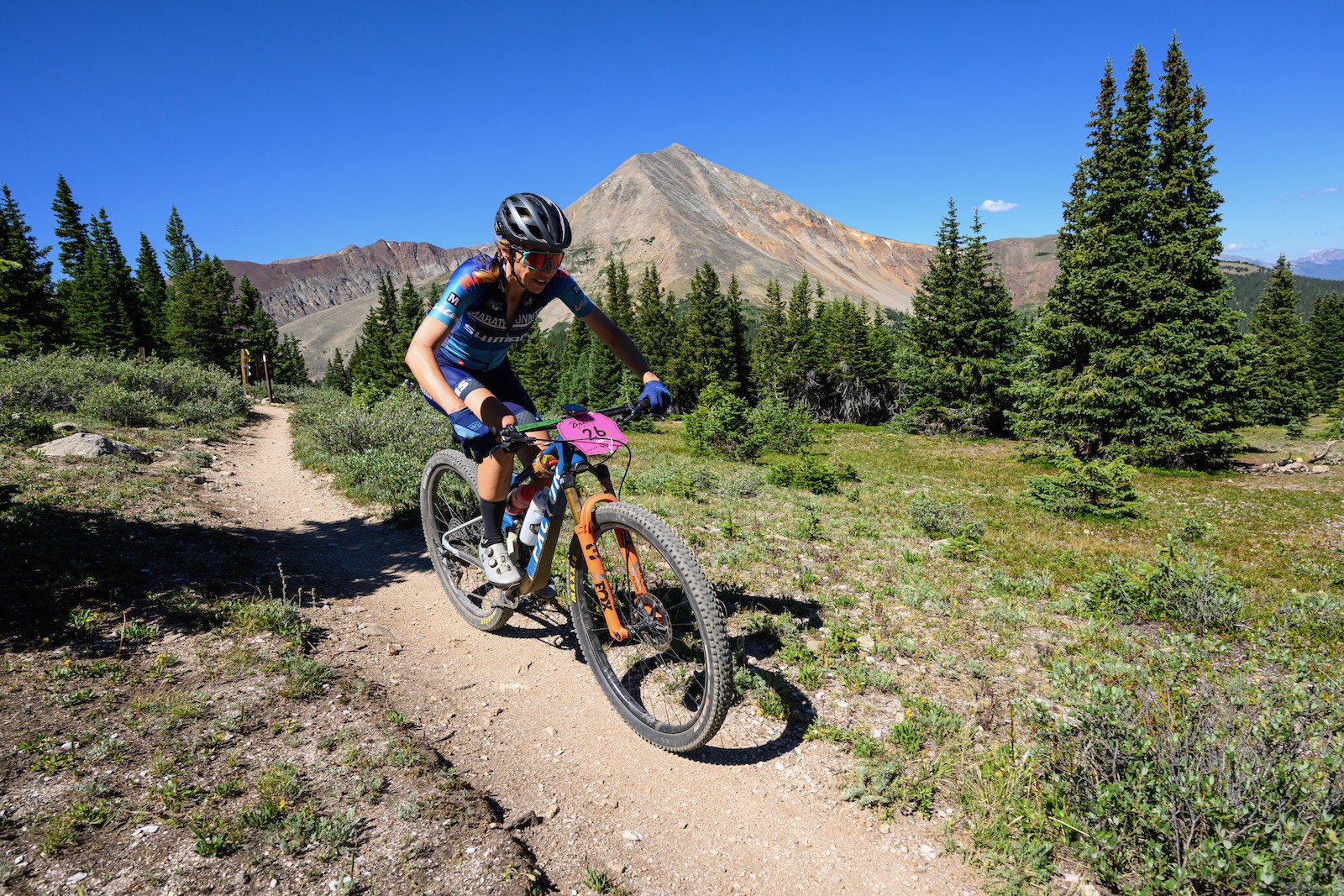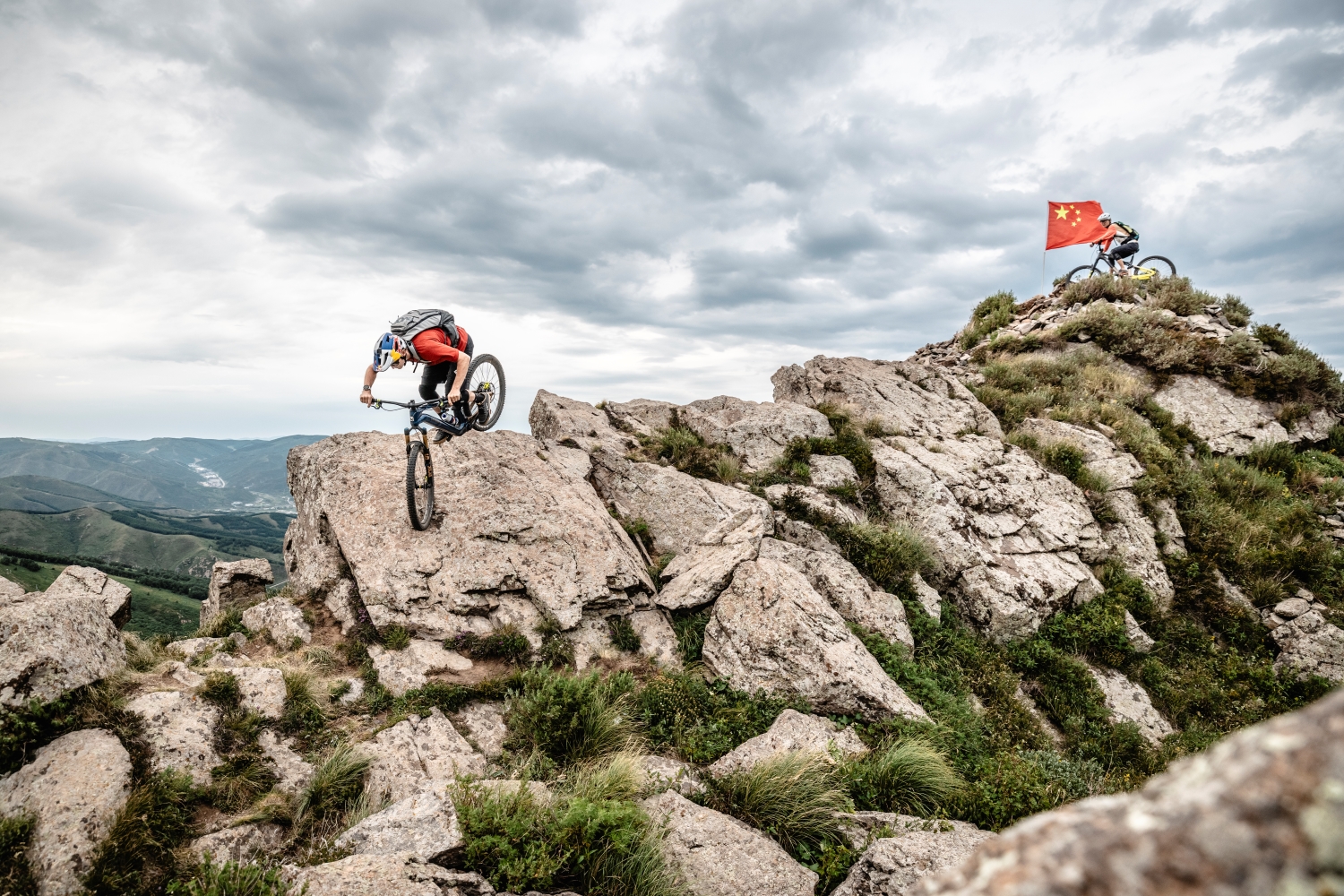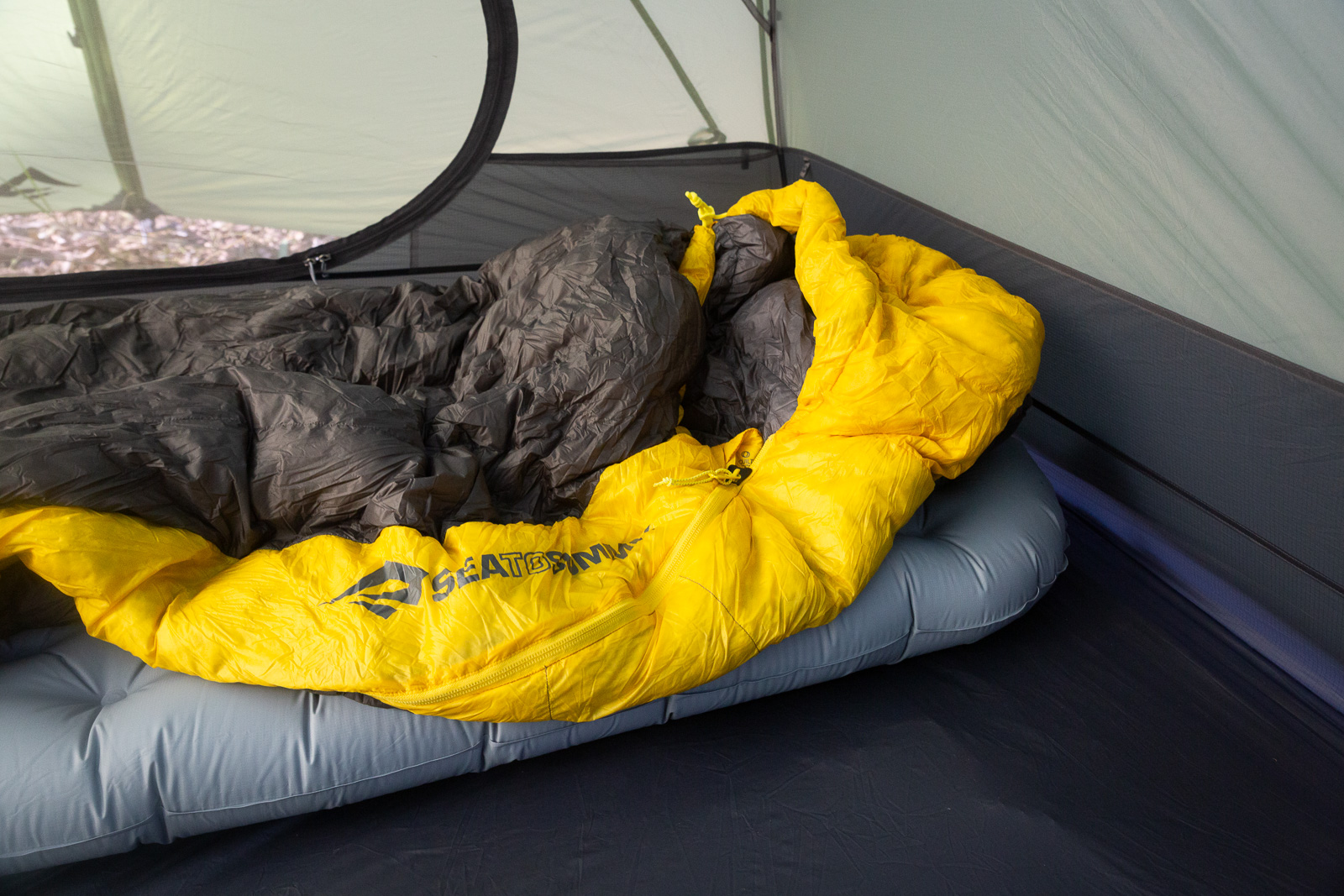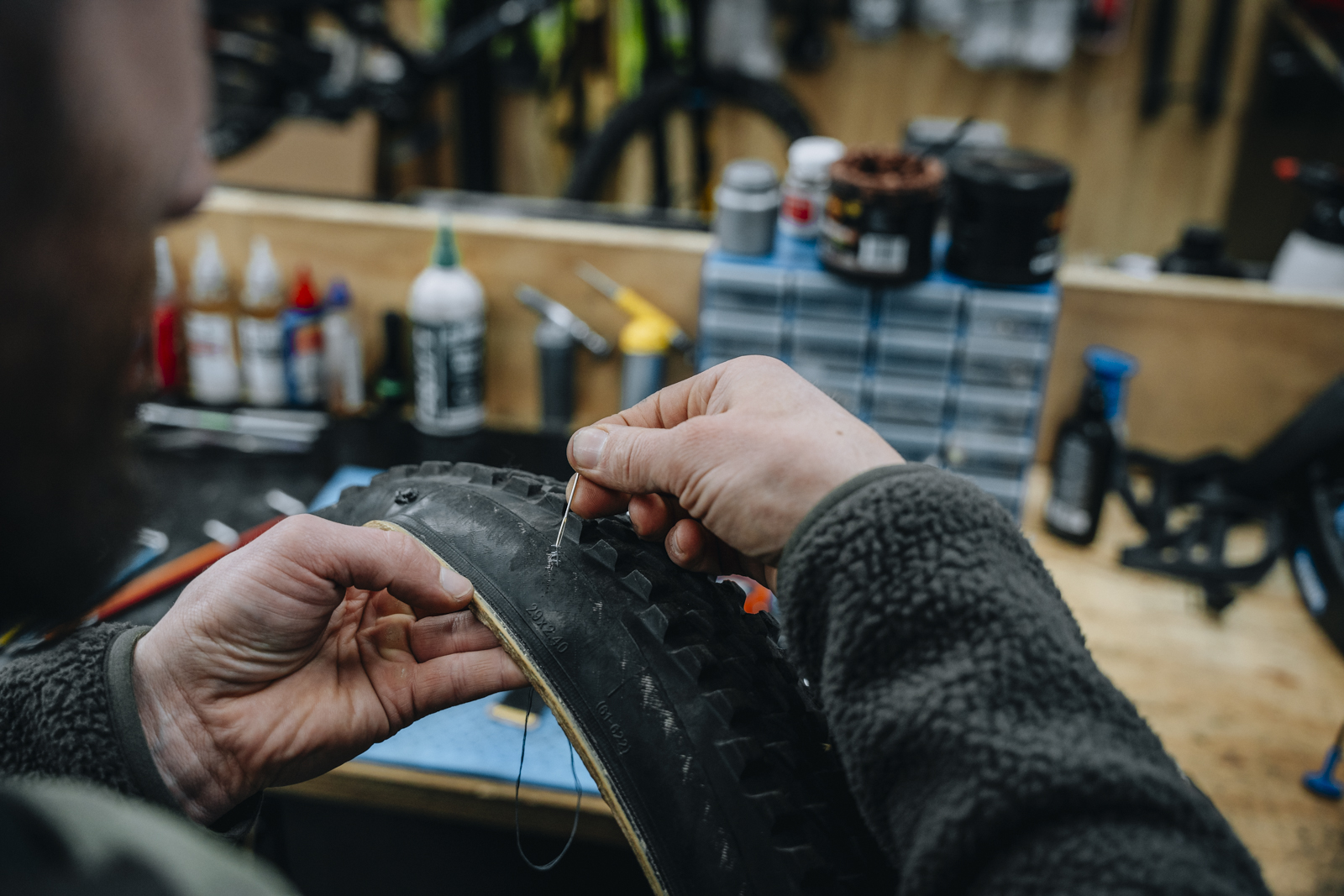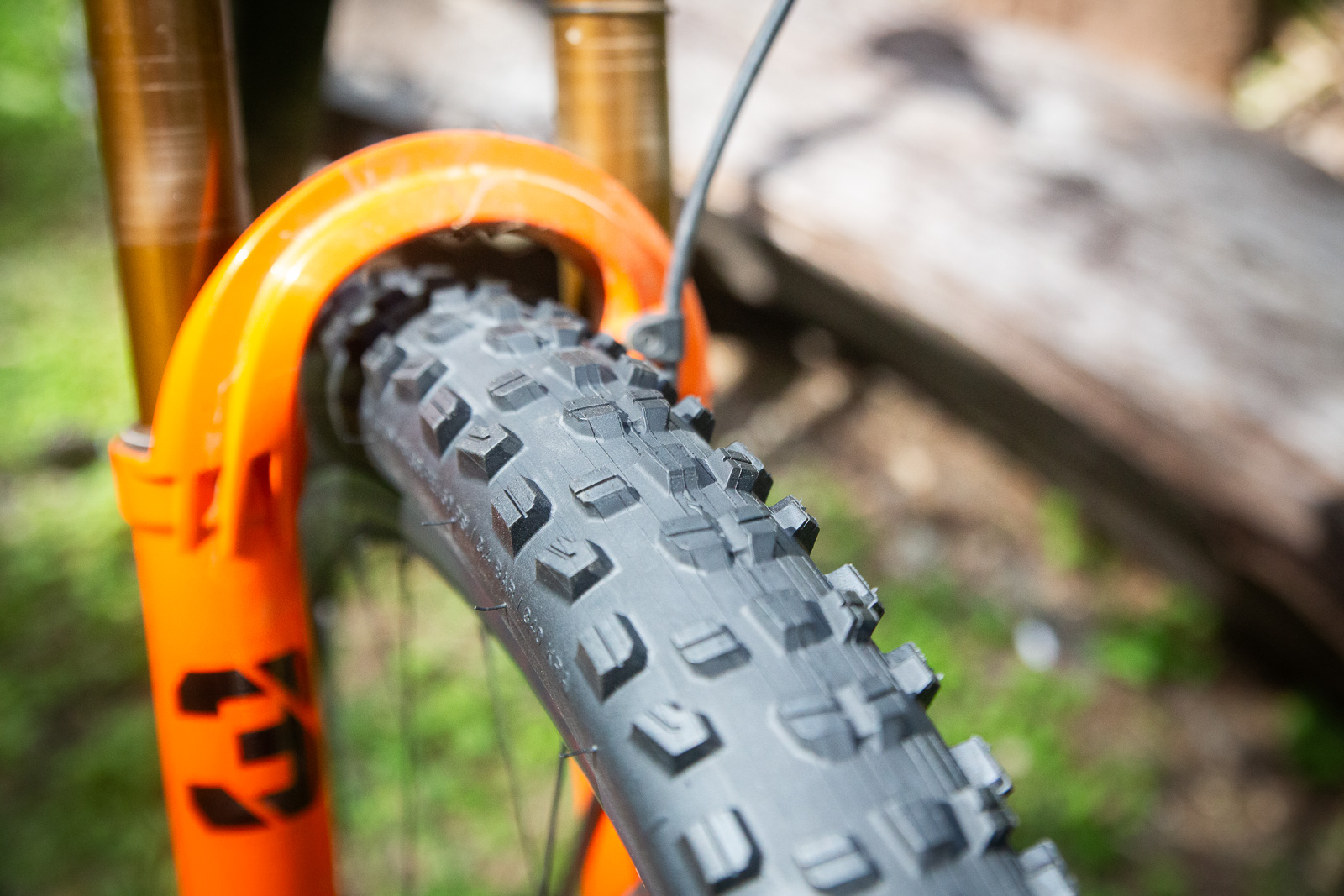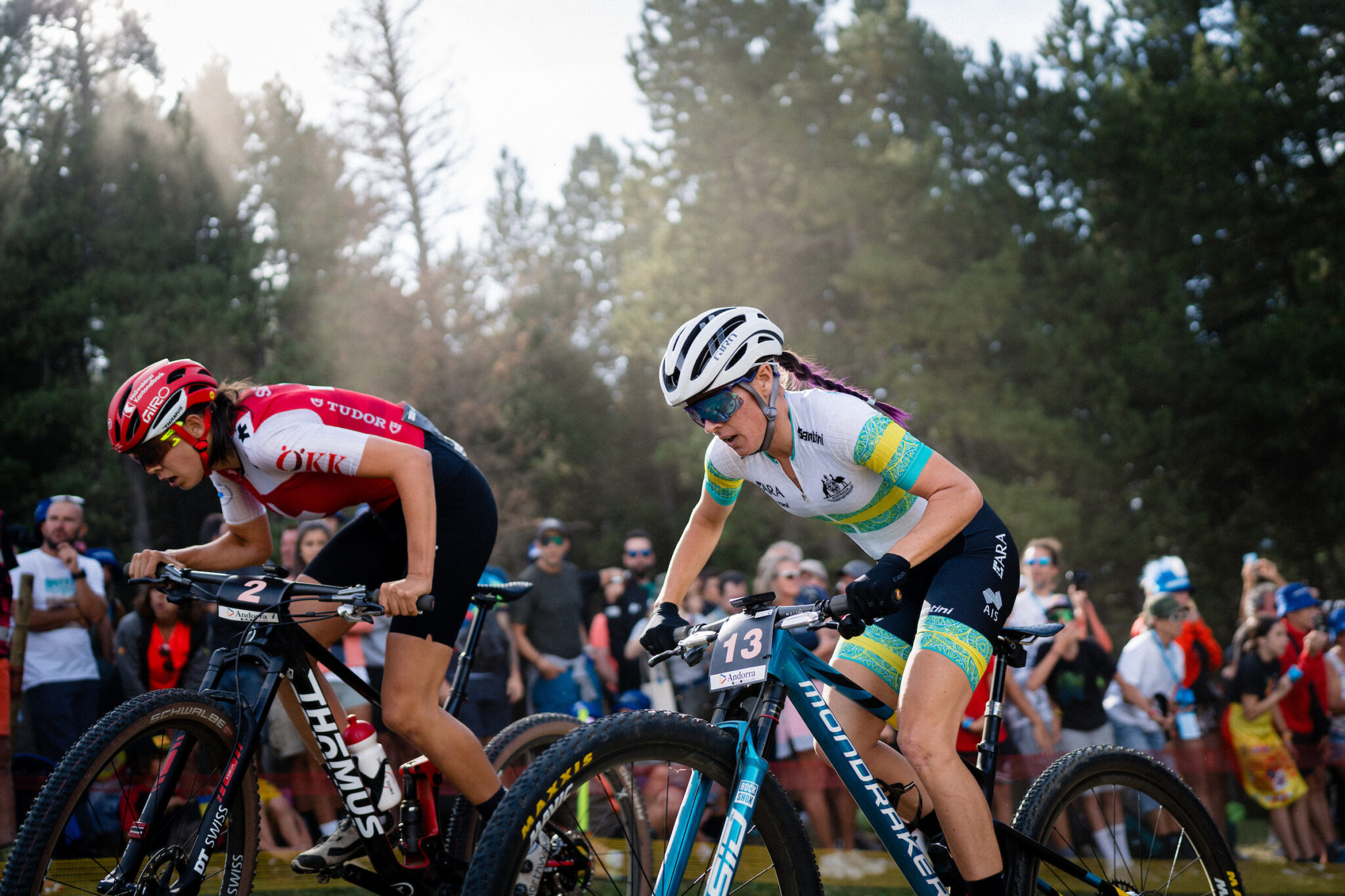Breck Epic - the beating heart of mountain biking
The Breck Epic is an iconic multi-day event in Breckenridge, Colorado. It revels in hard, but delivers everything that makes mountain biking what it is.
Photos: Eddie Clark
The Breck Epic has deep roots in the mountain bike scene that evolved in the west of the USA, in its mountain origins, and its backcountry terrain. It’s high, wild, and rowdy. It’s hard as heck – and proud of it.
Central Colorado sits atop a huge, high plateau. Here you’ll find famous ski resorts like Aspen and Vail, as well as the biggest, bloodthirstiest mountain bike and gravel races in the world: Leadville and Steamboat. An hour or two up the road, the ski town of Breckenridge, or Breck for short, is one of the highest towns in the USA, at 2900 metres above sea level. That’s a full 1000 metres higher than Falls Creek, where Aussie athletes do their altitude training, and 700 metres higher than the summit of Mt Kosciuszko, Australia’s highest mountain.
The six-day Breck Epic is one of the world’s most notorious mountain bike stage races. It’s known for its elevation, for the quality of its trails and, as I found out first hand, for keeping the spirit of mountain bike alive in all its adventurous, unruly glory.
Driving up to Breckenridge doesn’t necessarily feel like driving into the high places of the world. Having travelled to Europe’s Alps to ride my mountain bike a few times over the years, I’d been expecting it to feel similar: a narrow winding road. Trains. Waterfalls. Snow-capped peaks with huge, rocky prominences. Instead, I cruise along one of Colorado’s broad highways with grassy plains and wooded hills on either side, being overtaken by big trucks driven by people in big hats towing big caravans. The only clue that I’m nearing 3000 metres elevation was a faint breathlessness, a slight giddiness. I stop at a Walmart for a few supplies. Nobody else seems to notice a lack of oxygen. It could all be in my head.
Backcountry at its best
Breckenridge lies deep in Colorado’s frontierlands. Places where gold and silver rushes brought enterprising new Americans into the wilderness. Trails in Breck and the surrounding areas were not built as we know trails in Australia. They were carved out by bullock, by mattock, by foot and by hoof. They stretch out over swathes of forest, where old mining machinery – team engines and riveted metal junk – emerges from the ground like bodies from a melting glacier. Rickety rail tracks survive deep in the woods, and giant spoil heaps ten stories high perch where they were abandoned a hundred or more years ago, when the gold, silver, and luck ran out.
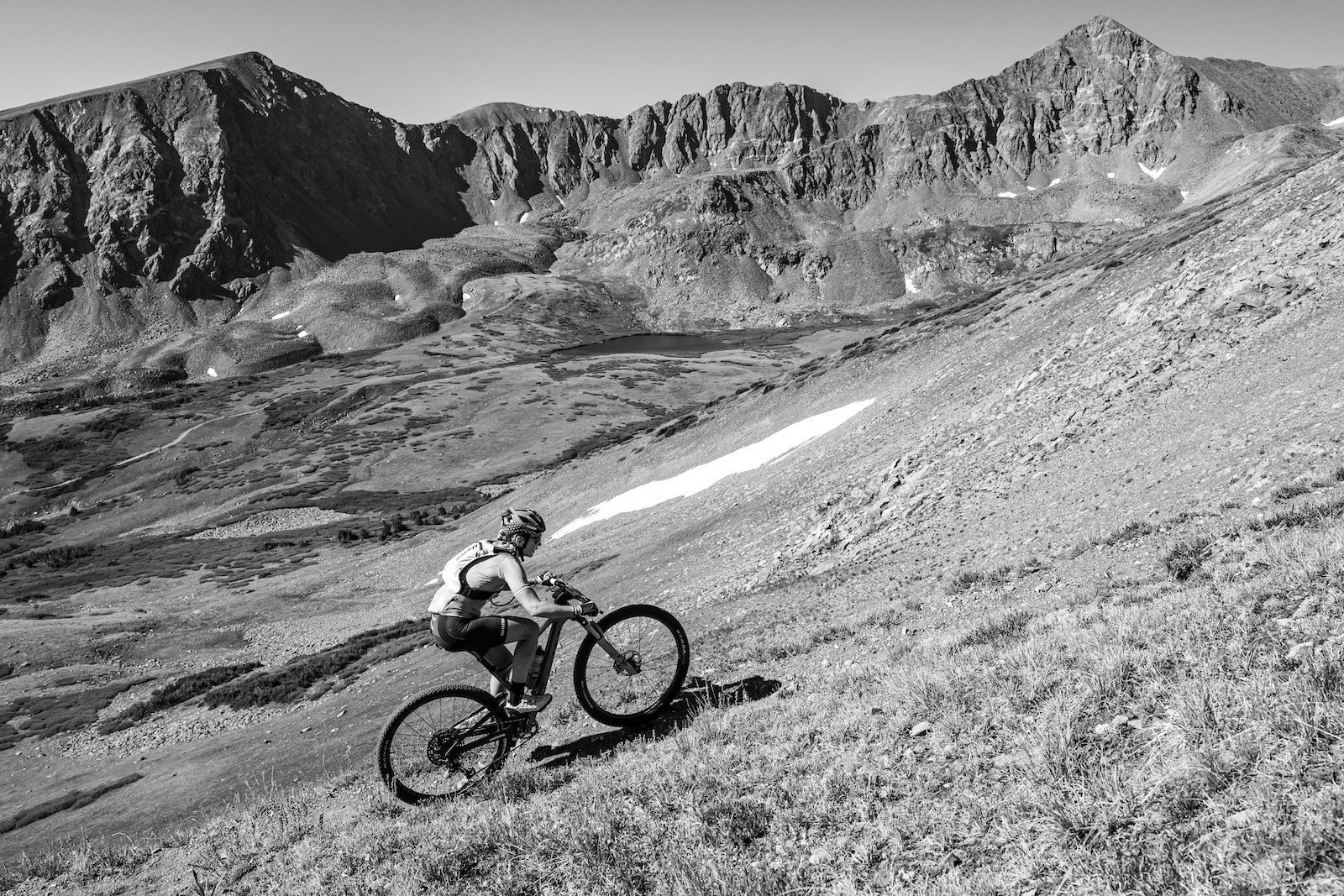
The pioneers moved on, and now Breck Epic racers swarm the town with their own kind of crazy prospecting every brief summer for six full days, trying their luck out there in the backcountry.
I reach Breck in the afternoon, find my condo in a building all but empty in the summer low season, and unload a month’s worth of road-trip crap onto a luggage cart to shuttle to my tiny studio. Every Breck Epic stage is based right out of the centre of town, so I can set up a base, hit the supermarket and cook my own food or hang out with a bunch of international racers without the frenetic daily transfer process common to many stage races. A bed and a bike is literally all I need – Breck will provide the rest.
READ: Creating mountain bike culture – the Thomas Dooley interview.
The Breck Epic is made up of the six best adventure rides in the trail-rich area, each of which is pretty darn special on its own, let alone strung together into a stage race. But it’s more than that, Breck manages to tap right into the spirit of mountain biking that was distilled at its genesis in the 1990s, close by in the western United States. Before gravel came along, before dropper seatposts and machine-built flow trails, and way before e-bikes, mountain biking was simply about the courage to be different and one hell of a spirit of adventure. This, combined with the mountain-people’s principles of helping your friends and facing hardship with dignity makes Breck special.
Then there’s the altitude, which just makes you emotional.
Racing at altitude
Breck is the highest mountain bike stage race in North America, and among the highest mountain bike events in the world. At Breck’s altitude, the relative oxygen you breathe is reduced by around 30%, which means that there’s 30% less to fuel your body’s energy production processes. The result is that you breathe heavily, your heart pumps fast, but not a lot happens in terms of power production. At this altitude, altitude sickness is a very real possibility, as are mild symptoms like nausea, nosebleeds, sleeplessness, headspins… the list goes on.
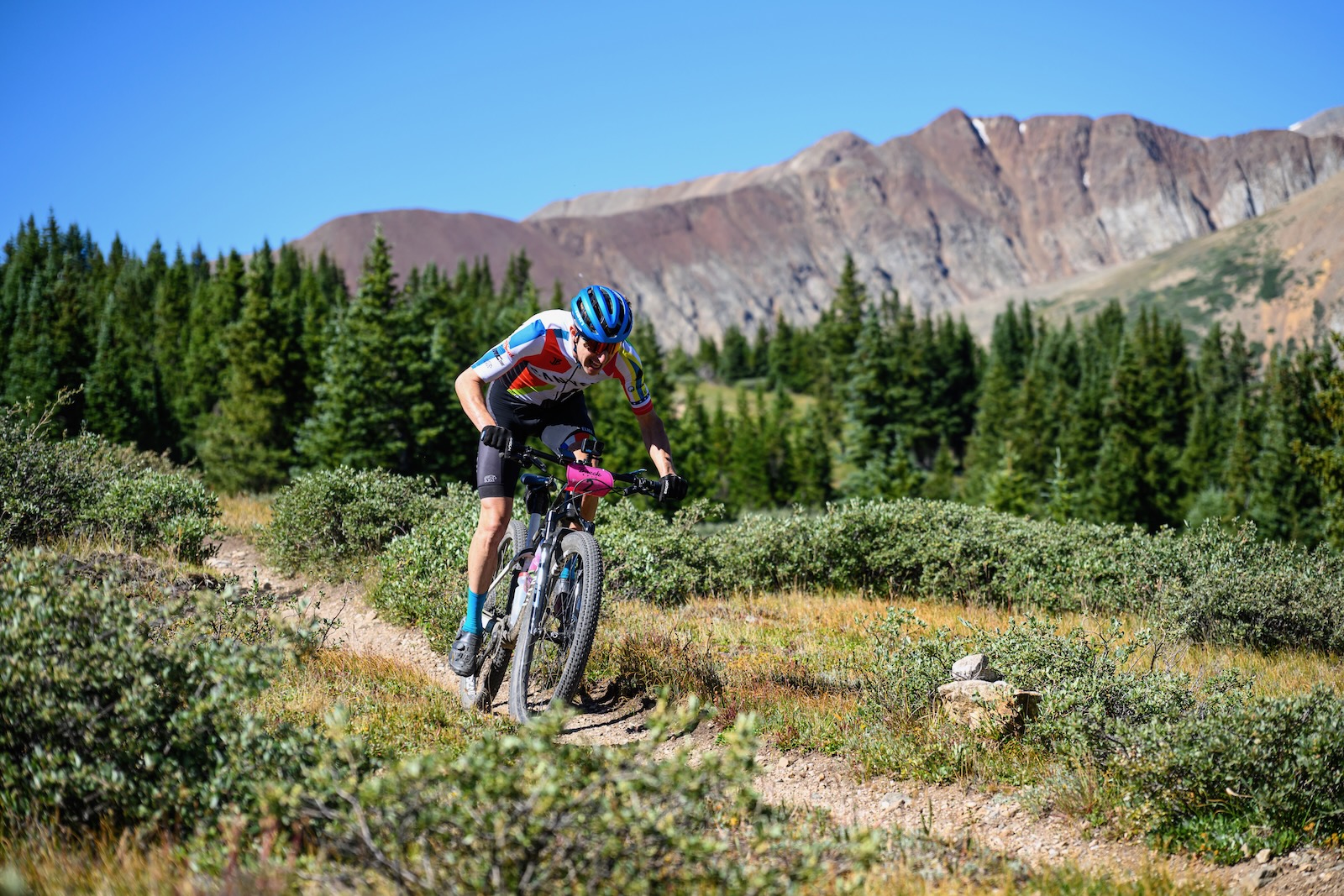
There are a couple of schools of thought about racing at altitude: One is to show up as late as possible and just put up with what you feel on the day, the other is to arrive early and acclimatise. I get to Breckenridge a few days early and avoid getting altitude sickness but still have a few nosebleeds and a few headspins. Walking around town is one thing, but on the bike the difference is stark. I huff and puff and produce barely any power. For those who like numbers, I’m hitting my threshold at around 160 watts, a full 80 watts lower than at sea level . It makes me worry about how long each stage is going to take me.
Breck Epic stages are short for a marathon stage race, but they’re tough. On average, there’s 55–65km of riding a day, and around 1,500–2,200m of climbing. The race never dips below 2800m elevation, but it climbs to nearly 3,900m on the iconic Wheeler Pass stage. But more about that later.
If you're Australian, even one who skis, the starting point of each stage is probably higher than you've been in your life. But the weird thing is that once you're in Breck, it becomes a non-issue. Like it's not even mentioned. Take a look at the Breck epic website and you'll see what I mean. The race isn't about the elevation at all. Never has been. And as the race goes on, I realise that the elevation just serves to simplify everything, because at that altitude there’s no way to game your body or your mind into doing better. You just can’t do any more than your body can do, and trying to go beyond is a sure-fire way to get into trouble (once you blow up, you’re set for a very long, very bad day).
So over my six days at Breck, mountain biking is distilled to its essence: just me and my bike, the elements, the terrain, and not much else.
The Breck difference
Apart from the elevation, what sets the Breck Epic apart is its staff, headed by the charismatic, eloquent, and fascinating character of Mike McCormack. Mike’s daily race briefings are so entertaining that they’re worth the entry fee alone. Mike, himself a former bike racer, lives in the nearby town of Golden, Colorado, and has been running Breck Epic since he dreamt it up 15 years ago with a trusted team, all of whom are seasoned athletes and racers in their own right.
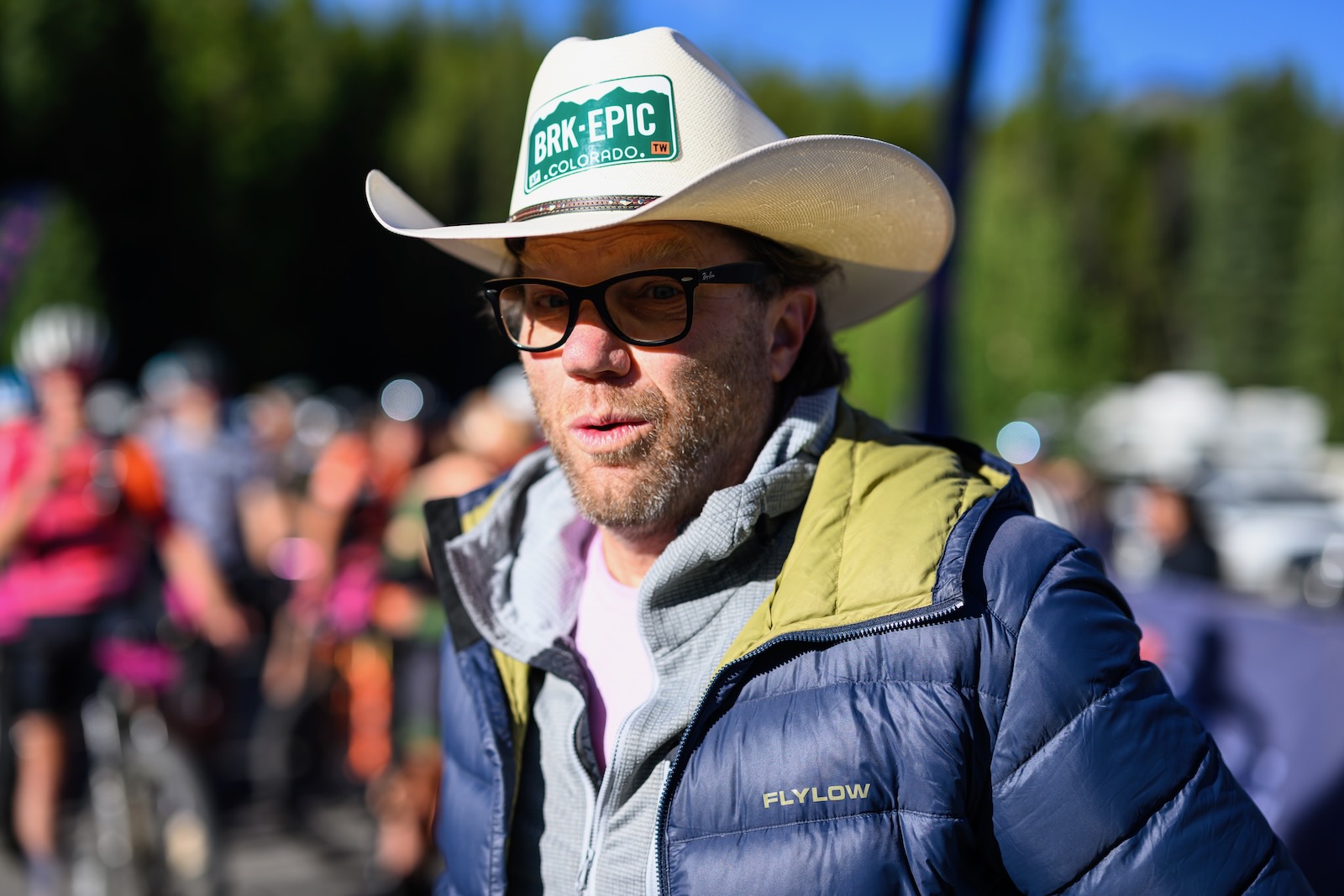
This means that Breck pays attention to the details that many other events overlook. For example, the fact that riders may want more than just bottles in any given feedzone, especially when taking part in a backcountry event where literally anything can happen. No worries, each racer is issued with three numbered and colour-coded canvas shopping bags, one for each feedzone, which are handed to you by a super-enthusiastic volunteer as you approach. You can fill it with bidons, a jacket, a spare tyre, beers, or Haribo gummies if you want – it doesn’t matter – but it’ll be handed up to you by an army of volunteers, and you can drop whatever you want in it to pick up later, too.
The routes are carefully curated into the six-day narrative, designed to take you and your bike on an emotional and physical journey through Colorado’s backcountry. We ride old mining infrastructure, massive climbs, alpine passes and infamous crossings of the Continental Divide. There are epic singletrack climbs and long, flowing descents over rocks, roots, and dusty gravel. But all that’s just building up to the nadir of the whole experience: The trip up Wheeler Pass on stage five. Wheeler is the stage everyone looks out for and everyone is nervous about. It starts at about 3000m above sea level and immediately climbs 1000m more, where the oxygen is so scarce that almost nobody can ride the steep singletrack to the top. Here, things get rowdy, with a small but completely insane group of supporters who’ve made the early trek up to where the air is thin to hand up beer, donut holes, shots, and of course, bacon. There’s music, there’s cheers, there’s a party, and there are always plenty of tears too. At elevation, everyone gets emotional.
Wheeler
On the big day, the nerves among the 400 or so racers are palpable. Everyone’s been keeping something in the tank for this stage. Many have brought a second pair of trail shoes that they can walk in just for today. We set off in waves of about 10 riders to avoid clogging up the climbing singletrack. Right from the gun it’s a slog, over roots and rock gardens that are almost impossible to clean. I ride up to about 3500m then, like everyone around me, climb off my bike and start to push.
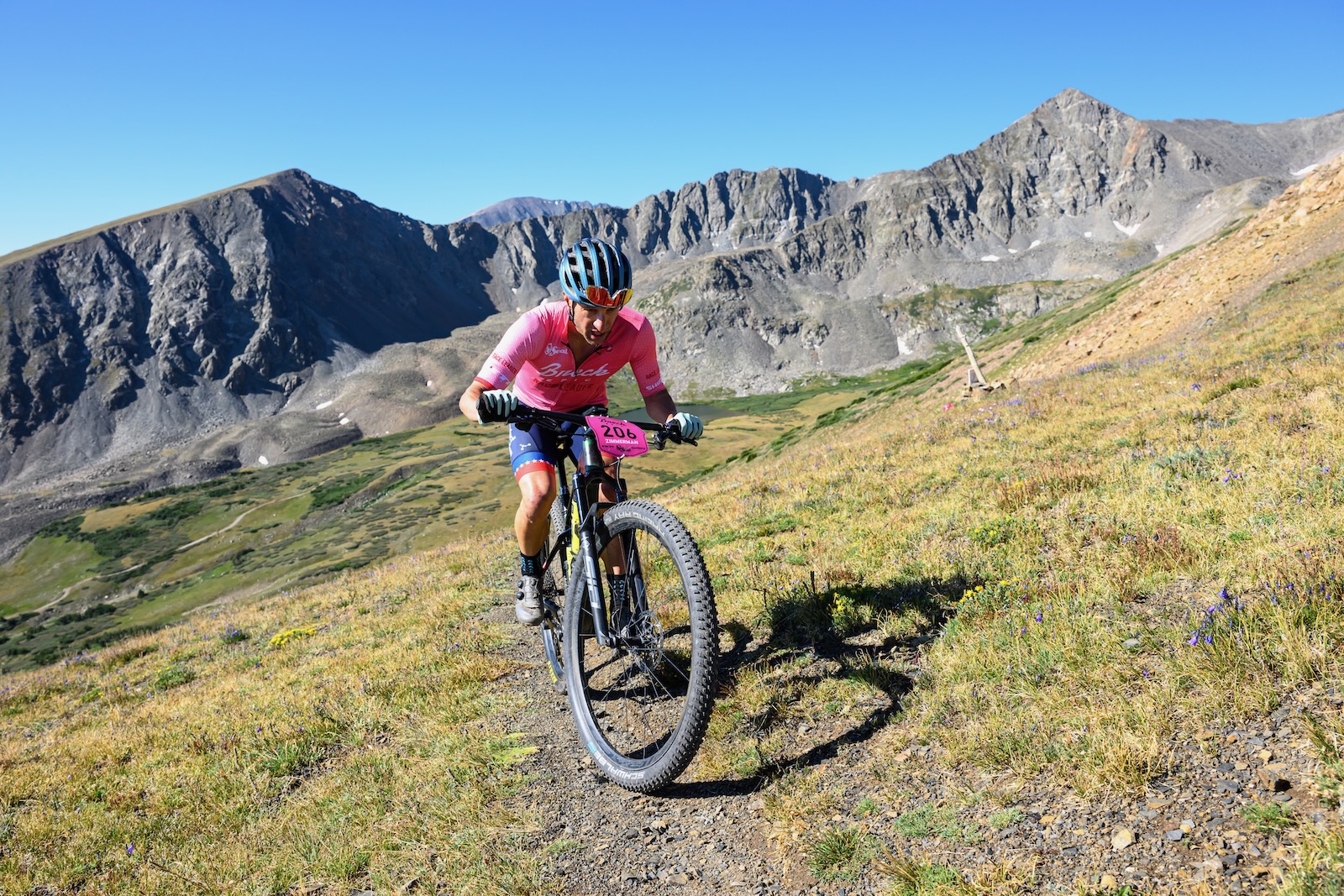
By the time we get to 3700m it takes me half an hour to get the GoPro out of the shoulder pocket of my hydration pack, and other 10 minutes to turn it on. I take wobbly, upside-down videos obscured by my glove, mostly of my bike seat or front tyre. Awesome. I think to myself. That’s going to make an awesome edit. (Hot tip, it didn’t.) By the time I’m at 3800m I can’t feel my arms. My head has detached and is bobbing somewhere a few metres above my body. I take one step for every four breaths. When I open my mouth to say something it comes out in a tremulous, weepy wail. I’m cryyyyy-iiiiing. Is all I can say.
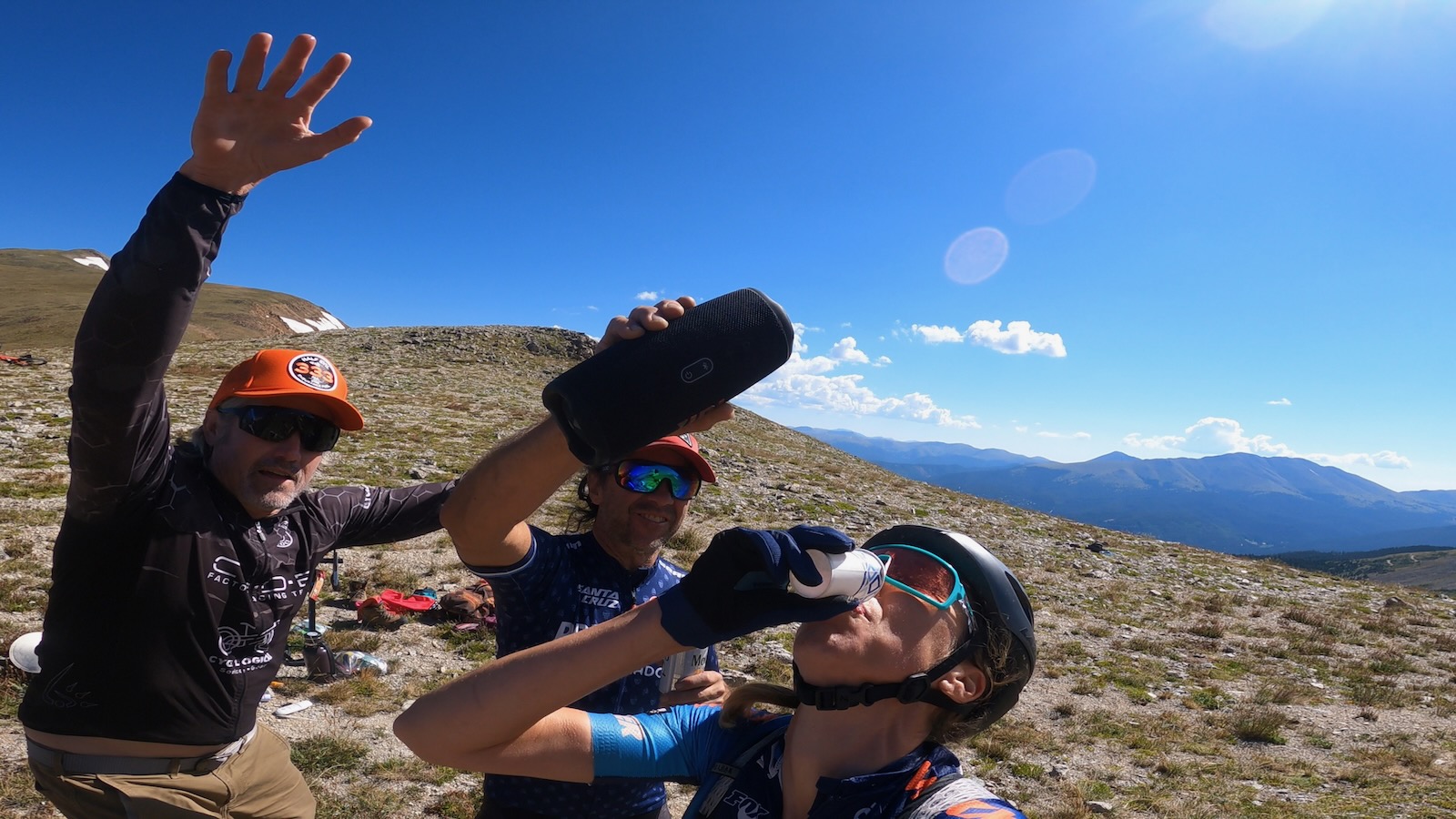
At the top I start to stumble a lot. It’s unclear whether my bike is holding me up or vice versa. I take a shot of mezcal from an enthusiastic supporter who walks beside me with a speaker until I remount, shakily, and wobble on. The mezcal’s heat radiates through my chest. Predictably, I get tipsy, but my coordination is already so bad it doesn’t matter. There’s a brief traverse on clinking, massive bits of landslide and chewed up rock where I tripod and stumble over stuff, not caring anymore if my expensive carbon-soled Shimano Sphyres survive, before another hike to the second peak.
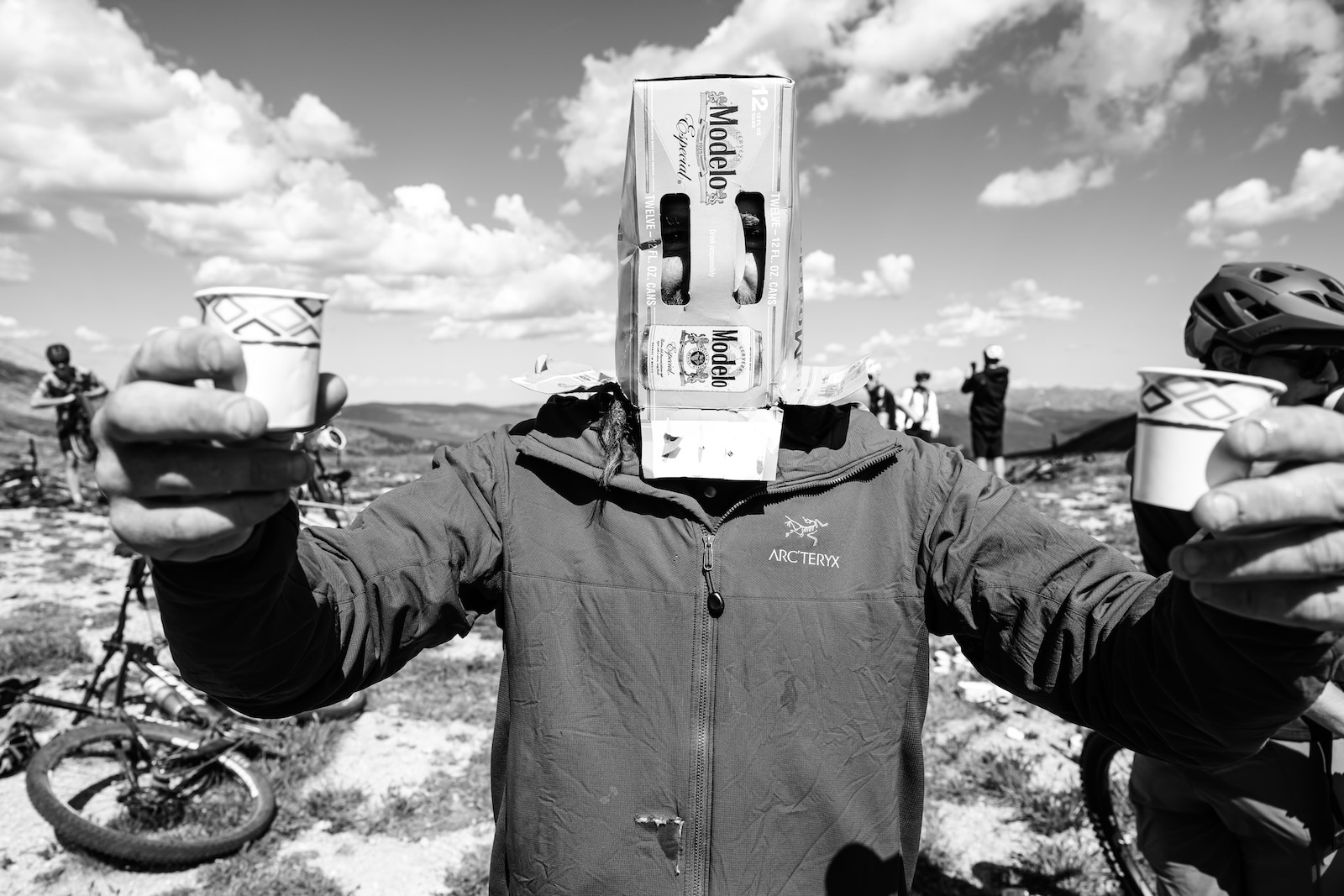
I’m so high up that it hurts to look around. It takes effort, but I swivel my head and try to absorb what I’m seeing. The earth looks bowl-shaped, like the sky, the sun flaring, is wrapped around my head. I’m surrounded by dozens of peaks, and towns far below look like tiny piles of sand, twinkling in the sun. I don’t look around for long, because stopping will hold up the queue behind me.
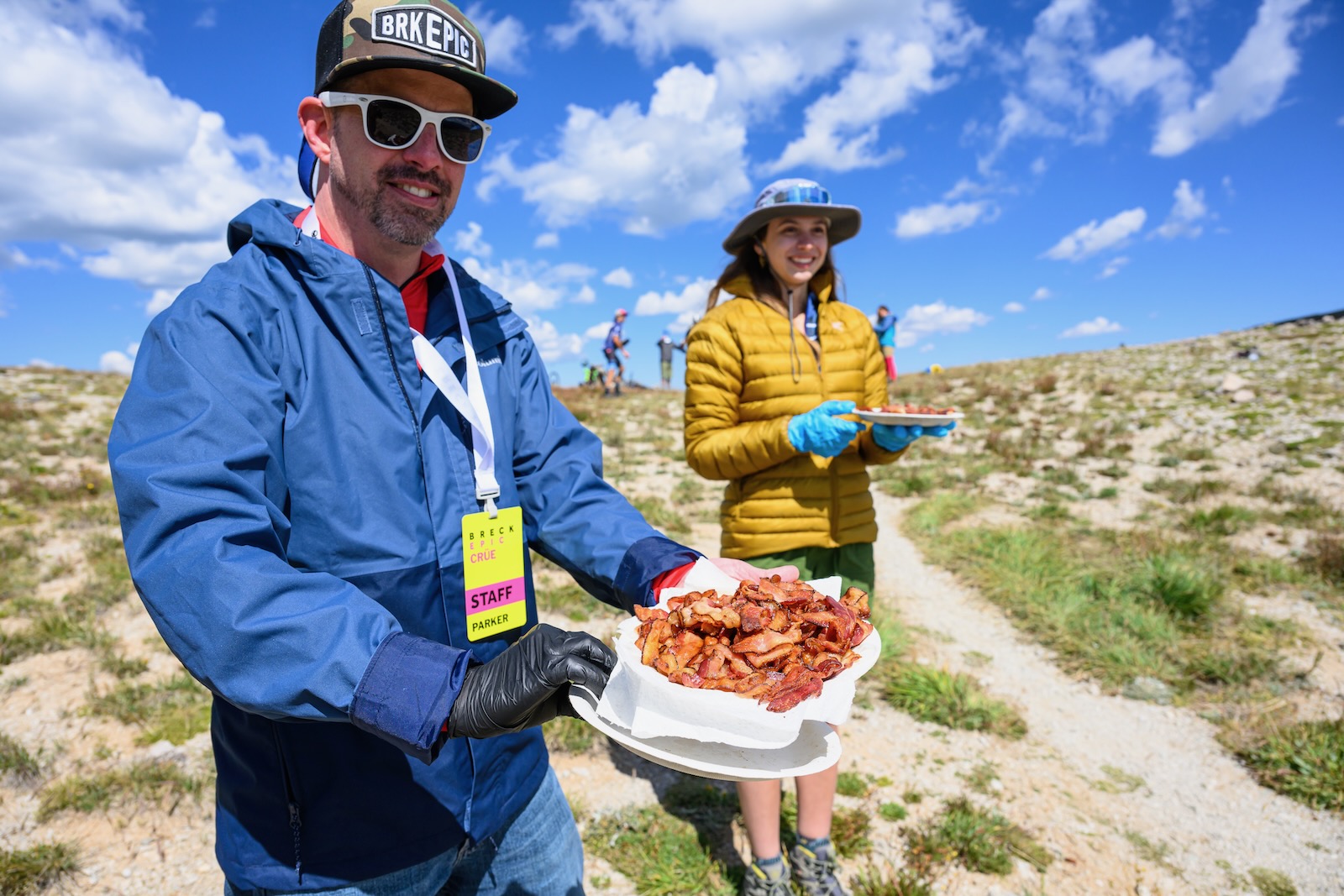
And anyway, it’s time to go down, as the route descends 800m over endless natural, rocky, steep trails: Fridge-sized rocks, microwave-sized rocks, toaster size rocks. Entire kitchens of rocks. A few flowy corners and I’m in babyhead chutes and rooty, bouldery flow, on and on, ears popping, before a final, heartbreaking climb on the way back to town.
The beauty of hard
Make no mistake, the Breck Epic is hard. That’s the point. I wonder whether a race like this could succeed in Australia. Purpose-built flow trails? About 1%. Hike-a-bike: LOTS. Beers and burgers at the finish? You gotta ride into town and get them for yourself. Socialising, drinking, eating –all are part of the experience, sure, but they’re not the point of this event. The point of Breck is to suffer, and in that suffering, find something special. The point is to ride your bike. Or at least take your bike with you on a ridiculous adventure.
Breck Epic brought me back in touch with why I race. Not to prove to myself that I’m tough or strong, Not to measure myself up against others, but because it makes everything simple. Because it brings me back in touch with my true self, with simply being. A single purpose that is hard to find in the high frequency of everyday life with its bills to pay and work politics and infinite personal challenges. A thoroughly tough stage race, some awesome trails, and a truly hard route to master takes away complexities and white noise and brings one back to the essence of just… being.
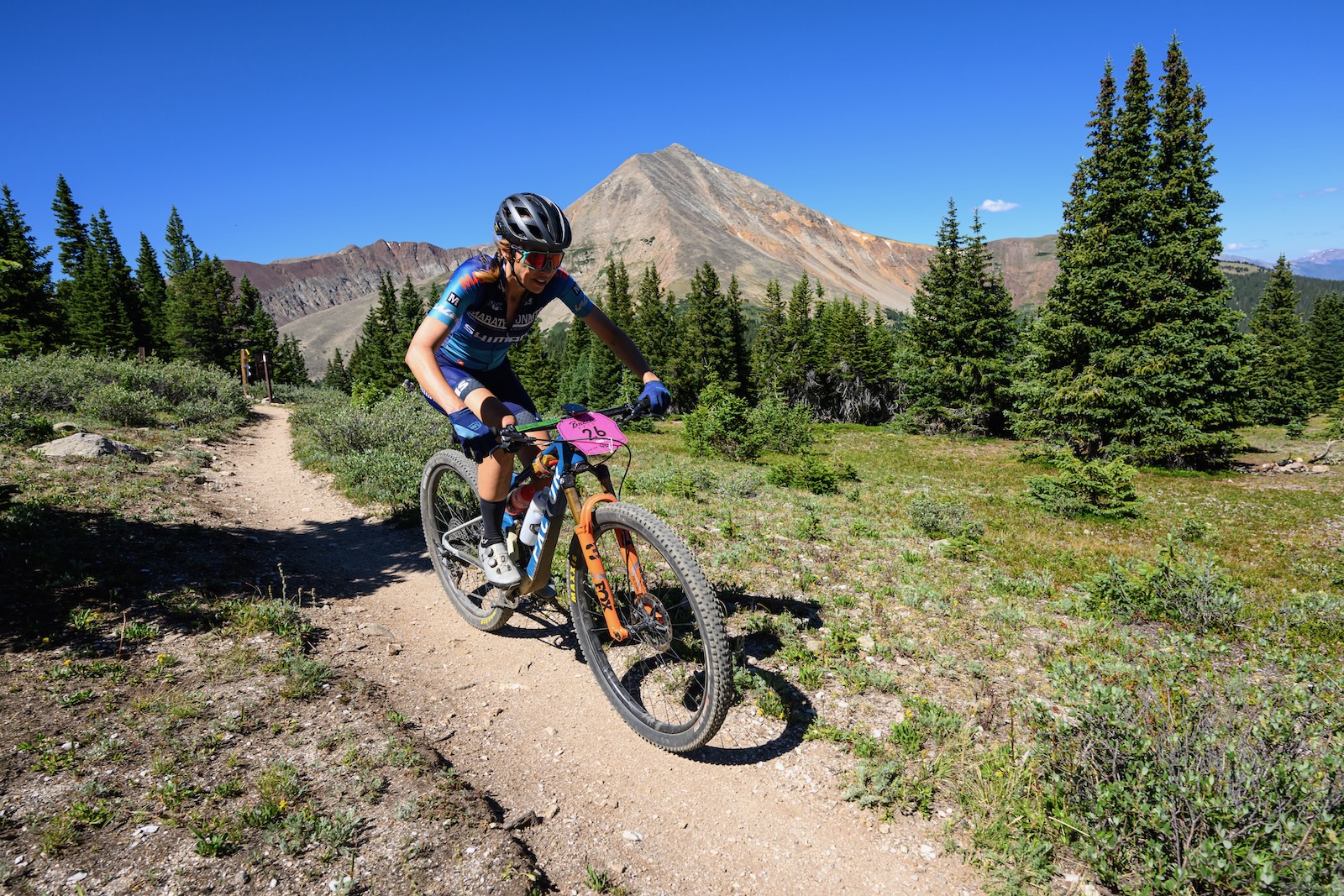
One of the beautiful things the Breck Epic does is take a professional portrait of each rider on the finish line of day one, then present you with a printed photograph at the final event celebration. You walk past tables of photos of familiar faces until you come across a REALLY familiar one, and it just fills your heart. There’s no finisher medal here. Completers are presented with a beautifully etched belt buckle, whose design changes every year. Engraved on the back are the words ‘Bad Motherfucker’. You can wear it every day if you want.
Up in that dry alpine air of the Colorado plateau is a perfectly preserved relic of the spirit of mountain biking. Breck Epic wears its heart on its sleeve and reminds us why we ride, why we race, and what mountain biking is all about: A human, a machine, and a planet full of possibilities.

Breck Dos and Don’ts
Do:
Get some elevation under your belt before you arrive if you’re a sea-level farer like me. A few days at 2000 or so metres, then a few days at 3000 in Breck worked well enough for me.
Be prepared to feel different. Your performance is reduced about 30 per cent at that elevation. You’re going to huff and puff a lot. Your body will blow up easy if you push hard. Be patient.
Take the handups: Skittles, beers, tequila, donut holes: whatever’s on offer is exactly what you need, whether you know it or not.
Consider taking some trail shoes for the hike-a-bike on the Wheeler Pass stage – this is an insider’s tip used by seasoned Breck racers. You’ll be on your feet for a while and carbon-soled race shoes aren’t necessarily the best choice.
Don’t:
Be dissuaded if you’re not as fast or coordinated as usual. It might seem like you’re the only one suffering from the elevation, but you’re not. Remember, this is what you signed up for!
Bother with oxygen bottles or boosters. Embrace the giddiness.
Get dehydrated. This is a dry, alpine environment. Get yourself a roll of hydration tablets and down an extra bottle or two of fluid to help you recover.
Miss a race meeting and briefing. Trust me, they’re hilarious – and necessary.
Forget to look around and take a selfie when you get to those truly high passes – not many people make it up there on their own steam.
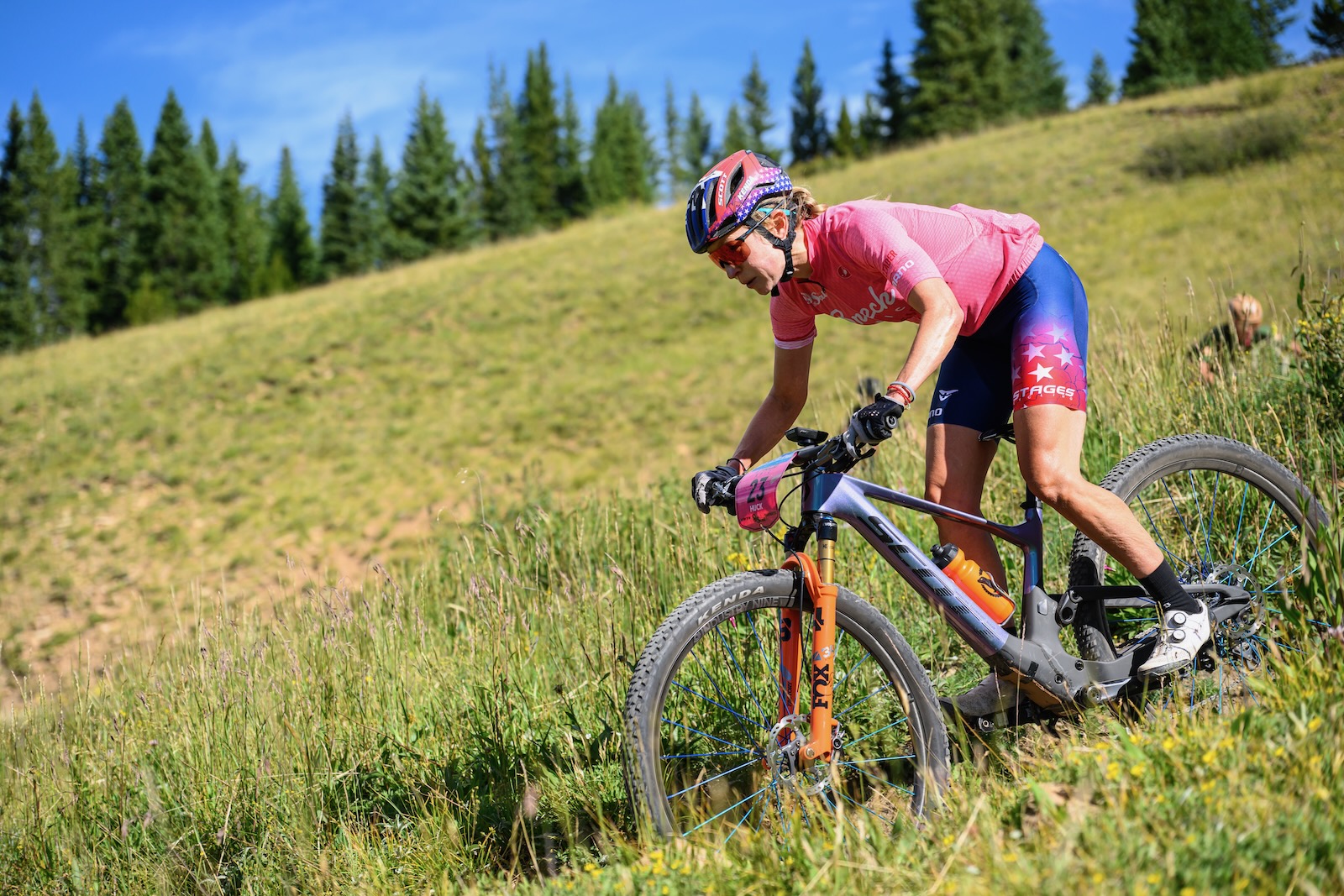
Women’s MTB Summit
Breck Epic’s focus on inclusiveness and widening participation in mountain biking over the years has paid off, and this year women made up 25% of entries, with the Pro Women’s field as deep as the Pro Men’s field, consisting of Olympians, former World and National Champions, top pros, and hundreds of years of mountain bike experience, as well as a very special vibe.
This year, Breck Epic partnered with influential mountain biker, podcaster and mindset coach Sonya Looney to present the Women’s MTB Summit, the first of its kind, lining up to coaches, athletes and experts to inspire and support women who want to experience everything mountain biking has to offer.
Set to continue and grow in 2024, the Summit provides women, from beginner to pro, with opportunities to develop as mountain bikers. Presented by women, for women, there were discussions on nutrition, performance, community-building, and motherhood, and bringing together yoga, skills clinics, social rides and tech clinics.
Check out Sonya Looney’s podcast for some recordings from the event.
2023 Breck Epic results
In 2023 the Breck Epic brought together some of the strongest Pro Women’s and Pro Men’s fields in its history:
Pro women
1. Erin Huck
2. Kaysee Armstrong
3. Kait Boyle
Pro Men
1. Lachlan Moreton
2. Cory Wallace
3. Tasman Nankervis
